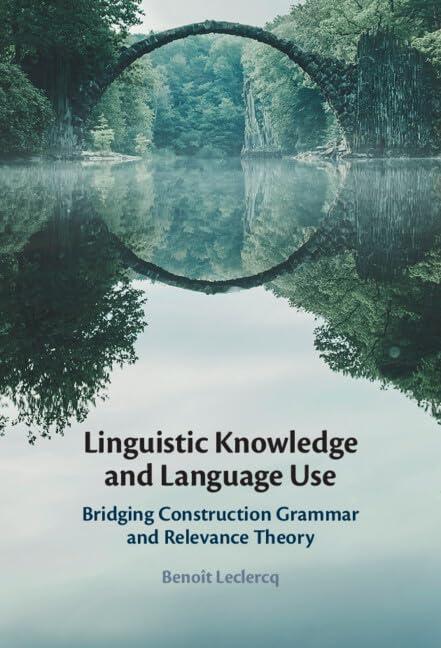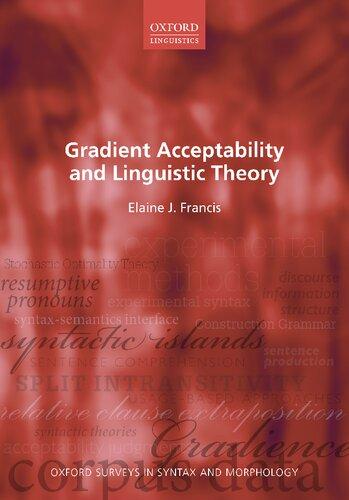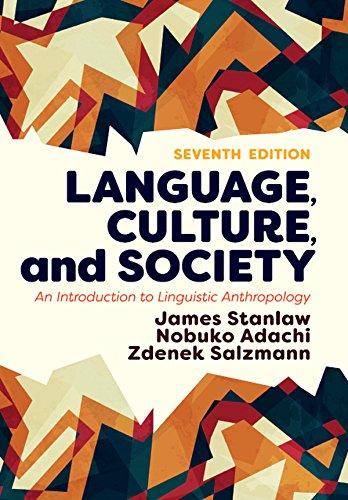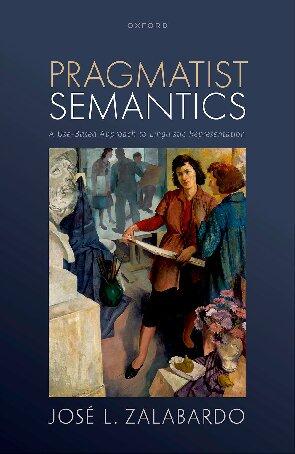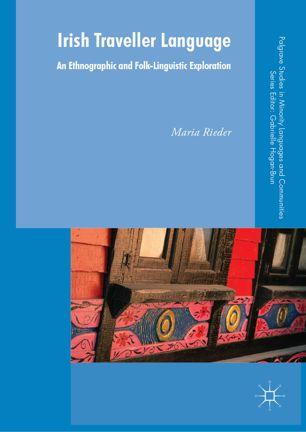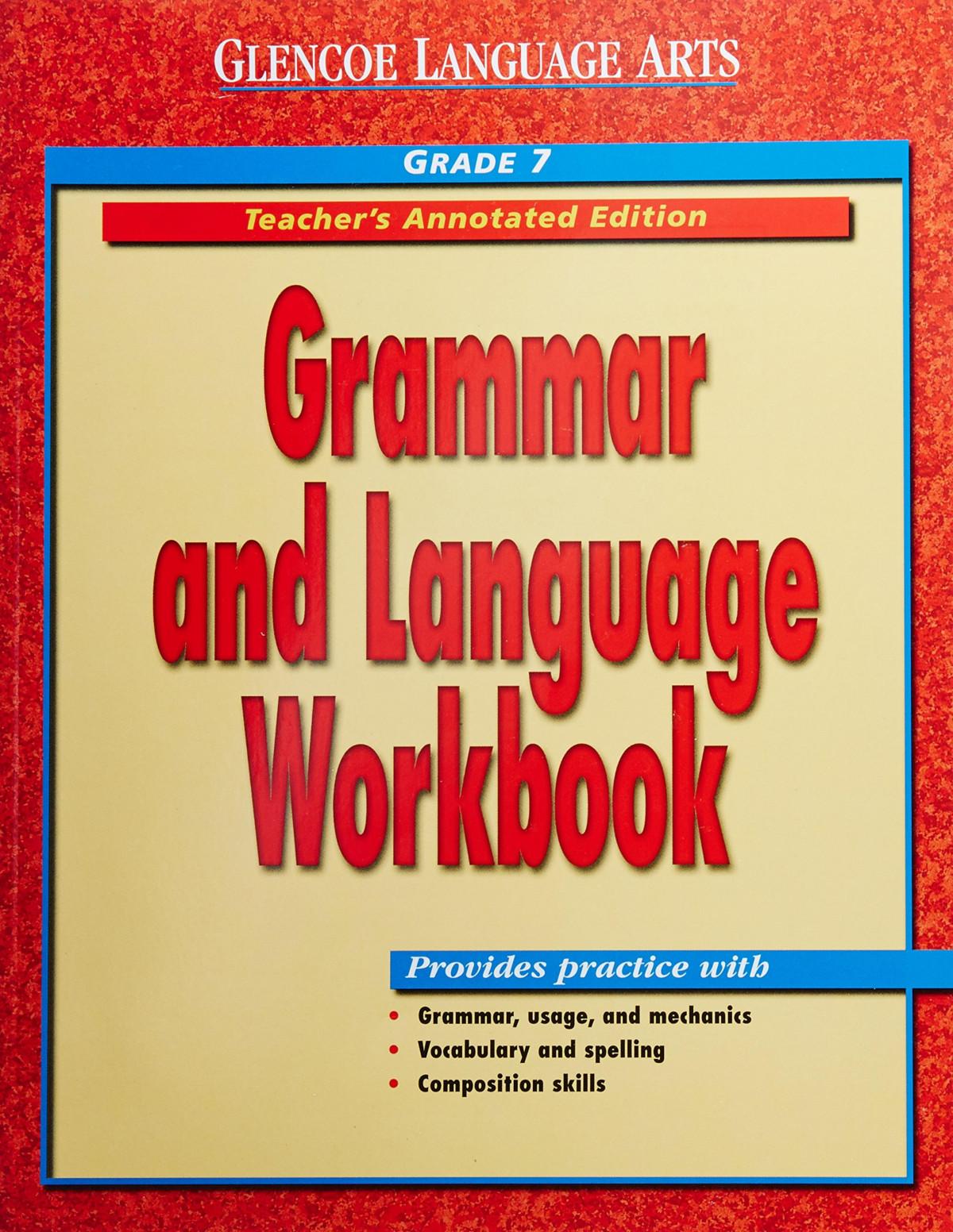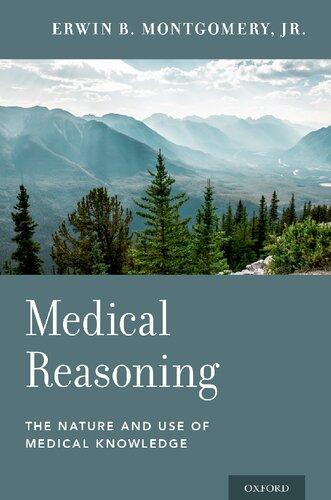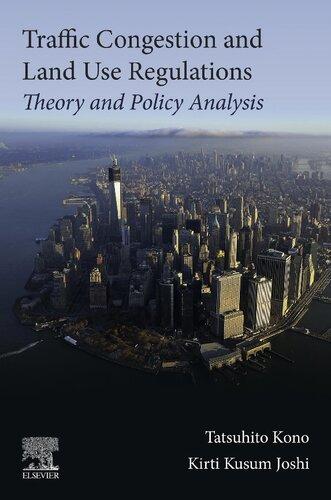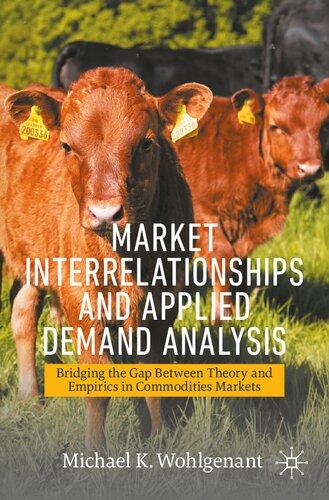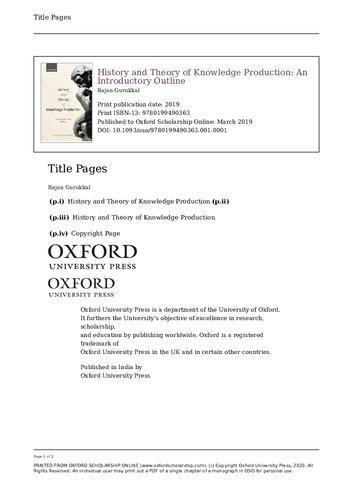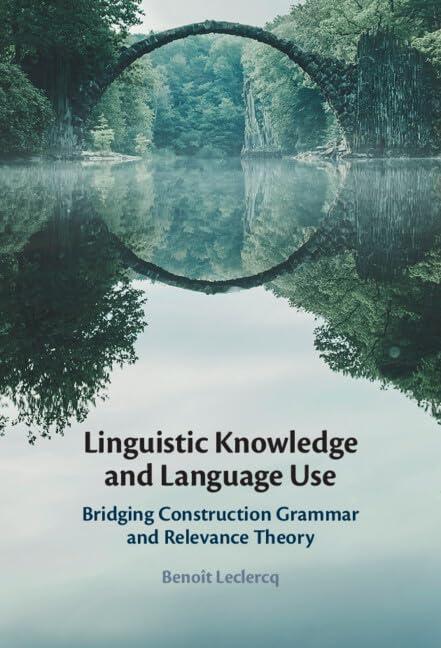2UnderstandingConstructionGrammar andRelevanceTheory
ConstructionGrammarandRelevanceTheorywillnowbepresentedinturn.In thecaseofConstructionGrammar,itwillbeshownthatitsmainstrength residesinitscapacitytoprovideathoroughunderstandingoflinguisticknowledge.Itsusage-basedtakeonlanguageprovidesprofoundinsightsintothe formsandfunctionsofthelinguisticunitsthatindividualscanuse.Atthesame time,thediscussionwillshowthatitsfocusonconventionsmakesforonly apartialunderstandingoflinguisticcommunication.ConcerningRelevance Theory,theoppositeobservationwillbemade.Iwillshowthatwhileit providesaveryelaborateanalysisofthepragmaticprocessesthatmakeverbal communicationsuccessful,theargumentationissometimesweakenedby theory-internalassumptionsaboutlinguisticknowledge.
2.1ConstructionGrammar
ConstructionGrammarisacognitivelyorientedtheoryoflanguagewhose centralaimistoaccountfortheentiretyoflinguisticknowledge.Theterm constructiongrammar was firstusedbyCharlesFillmoreandPaulKay (Fillmore,1985a, 1988, 1989; Fillmore,KayandO’Connor,1988; Fillmore andKay,1995),whowereconcernedaboutthelackofattentiongivenin derivationalgenerativegrammarstoallegedlymoreperipherallinguistic phenomena(e.g.idiomaticexpressions, ‘irregular ’ clausalstructures).Froma constructionistperspective,thesephenomenaareconsideredasmuchapartof anindividual’slinguisticknowledgeasanygeneralgrammaticalrules,andnot merelyby-productsofsomecombinatorialortransformationaloperations (HoffmannandTrousdale,2013b:3).Thatis,insteadofacore–periphery view,constructionistsadoptamoreholisticapproachtolanguage.Inthis approach,knowingalanguageonly(ormostly)consistsinknowing constructions,hencethenameofthetheory.LiketheSaussureansign(deSaussure, 1916),constructionsaredefinedasarbitraryform–functionmappings (Goldberg,1995:4).However,whereastheSaussureansignonlyappliesto lexemes(andmorphemes),thenotionofconstructionextendstoallaspects ofgrammar,includingidiomsaswellasabstractphrasalpatterns.Touse
Goldberg’s(2003:223, 2006:18)much-citedphrase,itis “constructionsallthe waydown.”
Adoptingsuchasymbolicviewoflanguageisofcoursenotdistinctiveof ConstructionGrammar.Thisideaislargelysharedbyfunctional/cognitive linguists(e.g. Lakoff,1987; Langacker,1987, 1991a, 2008; Talmy,1988, 2000a, 2000b; Wierzbicka,1988; Halliday,1994; Givón,1995,interalia). YetConstructionGrammarstandsoutfromotherfunctional/cognitive-oriented frameworksintermsofhowthesesymbols(i.e. constructions)aresaidtobe acquiredandmentallyrepresented,aswellashowtheyinteractwithone another.Thereare(naturally)differentpointsofcontentionbetweenconstructioniststhemselvesaswell.Theterm ‘ConstructionGrammar ’ infactcovers arangeofdifferentconstructionistapproaches(cf. CroftandCruse,2004: 257–290; Goldberg,2006:213–214, 2013; Hoffmann,2022:256–271; UngererandHartmann,2023).Inthisbook,Iwillmostlyworkwiththeideas developedwithin(Goldbergian)CognitiveConstructionGrammar(Goldberg, 2006:213; Boas,2013:233).Theabsenceofformalisminthisapproach seemsparticularlywellsuitedforitsintegrationwithRelevanceTheory. Nevertheless,sinceIwillnotdefactoignoreotherconstructionistapproaches,1 IwillcontinuetousetheumbrellatermConstructionGrammaranditsconventionalacronymCxGtorefertothetheory.
2.1.1FundamentalPrinciples
Theuseoftheterm construction inCxGcansometimesbeunsettlingwhen youarenotfamiliarwiththetheory,foritdoesnotonlyrefertocomplex combinationsorgrammaticalstructuressuchasisusuallythecaseelsewhere inlinguistics.Rather,allobjectsoflinguisticknowledgearearguedtobe constructions:morphemes,lexemes,idiomsaswellaslargerphrasalpatterns (Goldberg,2003:219).InCxG,whatdefinesaconstructionisnotitsinternal complexitybutitssymbolicnature:constructionsareconventionalpairingsofa specificformandaparticularsemanticorpragmaticfunction(Goldberg,1995: 4, 2006:5; Langacker,2008:5).Inordertobeconventional,i.e.inordertobe partofthespeaker ’sknowledgeandobtainconstructionstatus,thesepairings shouldexhibitatleastoneoftwoproperties:(i)non-predictability,and/or (ii)sufficientfrequencyofoccurrence. Goldberg(2006) putsitasfollows: Anylinguisticpatternisrecognizedasaconstructionaslongassomeaspectofitsform orfunctionisnotstrictlypredictablefromitscomponentpartsorfromotherconstructionsrecognizedtoexist.Inaddition,patternsarestoredasconstructionseveniftheyare fullypredictableaslongastheyoccurwithsufficientfrequency.(Goldberg,2006:5)
1 IalsolargelyembraceLangacker ’sapproach,CognitiveGrammar,whichcomesverycloseto Goldberg’sCognitiveConstructionGrammar(see Langacker,2009).
Originally, Goldberg(1995 :4)defi nednon-predictabilityastheonly defi ningcriterionforconstructionstatus.Fromthisperspective,constructionswereallassumedtobeeithersemanticallyorformallynonpredictable,theparadigmcaseofwhichareidioms.Thesemanticsof pieceofcake and kickthebucket ,forinstance,arenon-predictablebecause theyarenon-compositional,i.e.theycannotbeunderstoodsolelyonthe basisoftheindividuallexemesthatcomposethem.Inthesentencein(2), theformoftheconstruction manyaday isnon-predictable,giventhat many usuallyselectsforapluralnoun.
(2)Ihavewaitedmanyadayforthistohappen.(Hilpert,2019:10)
Linguisticexpressionsthatshownon-predictabilityarenaturallygoodcandidatesforconstructionstatus,fortheyrequirelanguageuserstostorethem independentlyofthecanonicalpatternsfromwhichtheycannotbederived (Hilpert,2019:12).Thisexplainswhymorphemesandwordsareconstructions,sincetheirformsandfunctionsarenon-predictableandlanguageusers havetolearnthemindividually(Goldberg,2002a:1).However,notalllinguisticpatternsarenon-predictable.Thephrases Makeawish and Imissyou,for instance,areneithersemanticallynorformallydeviant.Thesameistrueofthe multi-wordpatterns legalaction and inexchange aswellastheinflected forms smaller and students.Whatgivesthesepatternsconstructionstatusis notnon-predictabilitybutfrequencyofoccurrence.Thatis,thesepatternsare usedfrequentlyenoughtobestoredbythespeakerasdistinctconstructions (cf. Langacker,1988; StembergerandMacWhinney,1988; ArnonandSnider, 2010; HannaandPulvermüller,2014,interalia).2
Inotherwords,inCxG,knowingalanguageconsistsinknowingpatterns thatcombineaformandameaningeithernon-predictivelyorthatoccurwith sufficientfrequency.Accordingtothisdefinition,allofthepatternsin(3)to(9) areconstructions.3
(3) ADJ-ish
a.Partofitisyellowish.(COCA,spoken)
b.But,generally,Ithinkofmyselfasayoungishpersoninanoldish body.(NOW)
(4) Roof
a.Theroofisleakinginalotofplaces.(COCA,spoken)
b.Smokerisesthroughaholeintheroof.(COCA,spoken)
2 See UngererandHartmann(2023) forarecentdiscussiononthedefinitionofconstructions.
3 MostoftheexamplesusedinthisbookwereextractedfromcorporaavailableonMarkDavies’ interface(english-corpora.org):BNC(BritishNationalCorpus),COCA(CorpusofContemporary AmericanEnglish)andNOW(NewsontheWeb)corpora(Davies,2004, 2008-, 2016-).
(5) Privateproperty
a.Forexample,there’snoprivatepropertyintheSovietUnion.(COCA, spoken)
b.TrespassinguponprivatepropertyisunlawfulinallStates.(COCA, written)
(6) Breaktheice
a.WhatcanIsaytobreaktheicewithaguy?(COCA,written)
b.Didyoutrytodoanythingtobreaktheicewiththem?(COCA,spoken)
(7) X isthenew Y construction
a.Sothat’swhyIsay,youknow,landisthenewgold.(COCA,spoken)
b.Strongisthenewskinnyaccordingtothe NewYorkPost.(COCA,spoken)
(8) W AY construction(form:[SUBJ V one ’ sway OBL])
a.MickeyMousetootledhiswayacrossthescreen.(NOW)
b.Youcan’tbuyyourwayintosomeone’sheartandmind.(NOW)
(9) CAUSED-M OTION construction(form:[SUBJ VO BJ O BL])
a.Henry’sfriendmovedthebookcasesinMrEmerson’sstudy.(COCA, spoken)
b.Myconstituentswillvotemeoutofoffice.(COCA,spoken)
Inthesentencesin(3),themorphologicalschema ADJ-ish isusedtoindicate approximationorvagueness:vaguelyyellowin(3a),andrelativelyyoung/old in(3b).Thenoun roof in(4)referstothecoverofabuilding.Regardlessoftheir frequencyofoccurrence,thesetwoconstructionsareneithersemanticallynor syntacticallypredictablefromtheircomponentparts.Thisisnotthecaseof themulti-lexemeconstruction privateproperty in(5).Thisconstruction,used toindicateanindividual’slandorbuilding,canbepredictedbothsyntactically (asaparticularinstanceofthe[AdjN]pattern)andsemantically(i.e.itis semanticallytransparent).Still,itcertainlyhasconstructionstatusformost (native)Englishspeakersduetoitshighfrequencyofoccurrence.In(6),the idiomaticexpression breaktheice issyntacticallypredictable.Itcanbeseen asaninstantiationofthemoregeneral[VNP]and[DetN]constructions. However,itisnotsemanticallypredictable.Nothingintheindividualmeanings of break, the and ice canpredicttheinterpretationoftheidiomintermsofa particularsocialbehaviorbetweenindividualswhoaremeetingforthe first time.In(7),the X isthenew Y constructionisneitherentirelysyntacticallynor semanticallypredictable.ThispatternisnotsyntacticallypredictablesinceY canberealizedbyanadjective,asin(7b),althoughthestring thenew would normallyselectanominalhead(toinstantiatethemoreregular[DetAdjN] pattern).Neitherisitsemanticallypredictable,becausenoneoftheelements thatoccurinthisconstructionsuggestthattheXandYitemsshouldbe interpretednotliterallybutinametonymicrelationshiptoabiggercategory
thathearersneedtoinferincontext,e.g.in(7b ) strong and skinny havetobe understoodinrelationtothecategoryofwhatbodytypecurrentlyseemstobe moreattractive(cf. DancygierandSweetser,2014:154).The W AY constructionin( 8),usedtoconveymanner(ormeans)ofmotion,isarguablysyntacticallypredictable.Itisnot,however,semanticallypredictable.Themeanings ofthedifferentitemsin( 8b ),forinstance,andinparticularthatoftheverb buy,donotthemselvesconvey(metaphorical)mannerofmotioninterpretations(cf. Jackendoff,1990 :218; Israel,1996 :218).Finally,asimilar analysiscanbegiventothe CAUSED-M OTION constructionidentifiedin(9). Whiletheformoftheconstructioncanbederivedfrommorecanonical patterns,exampleslike(9b)showthatthecaused-motionmeaningwith whichitisassociatedisnotalwayspredictablefromitscomponentparts (cf. Goldberg,1995 :152 – 179).
CxGthereforeestablishesnoprincipleddistinctionbetweenelementsof thelexiconandlargerphrasal(or ‘syntactic’)patterns.Insteadofadichotomy betweenthetwo,itisassumedthatthereisacontinuumofconstructionsfrom morelexicaltomoresyntactic.Thiscontinuumisoftenreferredtoasthe lexicon–syntaxcontinuum (Langacker,2005:102; CroftandCruse,2004: 255; Goldberg,2006:220).Onewayofrepresentingthiscontinuumistolocate constructionsonagradientoflexical fixedness,i.e.fromlexically fixedto lexicallyopen(orschematic)constructions,asin Figure2.1 (inspiredby Kay andMichaelis,2012:4; Michaelis,2017, 2019).
Therearedifferentreasonswhynostrictdistinctionismadebetween lexiconandsyntaxinCxG,allofwhicharecloselyrelated.Themain reasonhastodowiththegeneralaimofthetheory.AlthoughCxG directlytakesitsnamefromarguingthatalllevelsoflinguisticknowledge canbedescribedintermsofconstructions,itisprimarilyconcernedwithhow linguisticknowledgerelatestocognitioninordertoprovidea “ psychologicallyplausibleaccountoflanguage” ( Boas,2013:233).Acentralassumption withinCxGisthatlanguagedoesnotrequireaspecificcognitivemechanism butistheproductofgeneralcognitiveabilities(Lakoff,1987 :58, 1991 :62; Langacker,1991b :1; Tomasello,2003 :3; Goldberg,2006:12, 2019 :52;
Bybee,2010 :6– 8, 2013 :49).4 Likeothermodelsinfunctional/cognitive linguistics,CxGthereforerejectsam odularviewoflanguageandinparticulartheautonomyofsyntax( CroftandCruse,2004:1; FriedandÖstman, 2004 :24).Thatis,grammaticalconstructionsarenotseparatedfromtherest ofourlinguisticknowledgeandabilities.Inaddition,constructionists considerthatthe “ primaryfunctionoflanguageistoconveyinformation” ( Goldberg,2013 :2). 5 Fromthisperspective,allcomponentsoflanguageare consideredtobemeaningful.Hence,likelexicalitems,grammaticalconstructionsareassumedtohaveaspecifi cmeaningthatcontributestothe understandingofthesentencesinwhichtheyoccur.Thisisthecaseforthe W AY constructionandthe CAUSED -M OTION constructionin(8 )and(9 )discussedabove.Itisalsotrueofthe DITRANSITIVE construction,different instantiationsofwhicharefoundin(10 ).
(10)a.TheUnitedNationswasgivingthemfood.(COCA,spoken)
b.Heloisepassedmethewoodenbowl.(COCA,written)
c.Hetoldhiswifethesamething.(NOW)
Althoughtheinterpretationsofthesesentencesdiffer,theyarecomposedof similarconstructions,oneofwhichiscalledthe DITRANSITIVE construction (Goldberg,1995:141–151).Intermsofsemantics,itisthisconstructionthat conveysthenotionoftransfer,ormorespecifically X CAUSES Y TORECEIVE Z (Goldberg,1995:141).Andthismeaningissaidtobeassociatedwiththe abstractphrasalform[SUBJ V OBJ1 OBJ 2],whichallsentencesin(10)instantiate.Specifically,alltheslotsofthispatternareassociatedwithaspecific function:
(11) D ITRANSITIVE :Syn:SUBJ VOBJ1OBJ2 ()()()() Sem:Agent CAUSE-RECEIVE RecipientTheme
Astherepresentationin(11)indicates,eachoftheopenslotsoftheconstructionisassociatedwithaparticularfunctionwhich,incontext,isinheritedbythe
4 Thepsychologicalandneurologicalrealityofthisassumptionissupportedbyempiricaland experimentalevidence(cf.,forinstance,overviewsby BatesandGoodman,1997, 1999; TomaselloandSlobin,2005; Behrens,2009,andreferencescitedtherein).See Cappelle(to appear) foracriticaldiscussion,though.
5 ThisquoteisinterestingasitcouldsuggestthatConstructionGrammarfallspreytothe “descriptivefallacy” (Austin,1962:3),namelytheassumptionthatwordsandutterancesare onlyusedtoconvey(truth-evaluable)propositionswhilelanguageisalsousedtoperforma numberofotherfunctions(i.e.speechacts).YetthisisclearlynottheviewadoptedinCxG.Not onlydoesitrejecttruth-conditionality,butitalsoacknowledgestheothertypesof(pragmatic) functionsthatlanguageisusedtoperform(seenextsection).Nevertheless,aswillbeshownin Section2.1.2.3,thisquoteisagoodexampleofthesymptomaticvaguenesswithwhichissues thatrelatetothesemantics–pragmaticsinterfacearetreated.
lexicalitemsthatoccurinthatslot.6 In(10a),forinstance, them and food are respectivelyinterpretedas ‘recipient’ and ‘theme’ becauseoftheiroccurrence inthe O BJ 1and OBJ 2slotsofthe DITRANSITIVE construction.Ofcourse,itcould alsobearguedthattheseinterpretationsofthelexemesarenotduetotheir beingusedinadistinct DITRANSITIVE constructionbuttothesubcategorization frame(i.e.valence)7 ofthemainverb give ofwhichtheyarethearguments. Althoughthismightsometimesbethecase,theperspectivedevelopedinCxG nonethelessseemstoprovidebetterinsightsintoanindividual’slinguistic knowledgeandabouttheiruseofthelanguage.Firstofall,experimentaldata revealthattheseconstructionsarepsychologicallyrealandthatlanguageusers dostoregrammaticalpatternsinassociationwithaspecificfunctionindependentlyofthelexicalitemsthatoccurinsidethem(cf. HareandGoldberg,1999; BenciniandGoldberg,2000; KaschakandGlenberg,2000; Chang,Bockand Goldberg,2003; GoldbergandBencini,2005; Ye,ZhanandZhou,2007; BenciniandValian,2008; Boyd,GottschalkandGoldberg,2009; Johnson andGoldberg,2013; ShinandKim,2021; Lietal.2022,interalia).
Moreimportantlyforus,theobservationthatgrammaticalconstructions, likelexicalitems,aremeaningfulnecessarilyshiftsthesemanticist’sfocusof attention.In(12),forinstance, kick isinterpretedintermsoftransferandthe expressions Bob and thefootball respectivelyreceivetherolesof ‘recipient’ and ‘theme’ notbecauseofthesubcategorizationframeoftheverb kick,which usuallyonlyselectsoneobject(e.g. Patkickedtheball),butbecauseoftheir occurrenceinthe DITRANSITIVE construction.
(12)PatkickedBobthefootball.(Goldberg,1995:11)
(13)LyncrutchedTomherapple.(KaschakandGlenberg,2000:512)
Similarly,the DITRANSITIVE constructionisresponsibleforthetransferinterpretationin(13)ofthedenominalverb crutch,wherebyLyn(SUBJ/agent)is understoodtohaveusedacrutchinorderforTom(OBJ1/recipient)toreceive herapple(OBJ2/theme).Inthiscase,notonlyaretherespectiverolesof Tom and herapple inheritedfromthe DITRANSITIVE construction,butalsothe CAUSERECEIVE interpretationof crutch.Theparticularinteractionbetweenalexeme
6 Therepresentationin(11)isadaptedfrom Goldberg(1995:50, 2006:138).Pleasenotethat althoughspecificthematicrolesand(Jackendovian)primitives(CAUSE and RECEIVE)havebeen usedtodescribetheconstruction’ssemantics,theyhaveno “theoreticalsignificance” here (Goldberg,1995:49).Thatis,theselabelsareonlyusedbecausetheyfacilitatethesemantic descriptionoftheargument-structureconstruction.However,theactualsemanticsofthe DITRANSITIVE constructionaremorecomplexandrequiremorethanalistofrudimentary components(see Section2.1.2.2).
7 Subcategorizationframeshavebeen “anessentialpartoflinguistictheorizingsince Chomsky (1965)” (Goldberg,2006:65).
andaconstructionsuchasin(13)isoftenreferredtoas coercion andwillbe addressedmorefullyin Section2.1.3.
Finally,CxGassumesnoaprioridistinctionbetweenthelexiconandsyntax becauseofitsusage-basedapproachtolanguage.Thatis,nosyntacticstructuresorlinguisticitemsofanysortareconsideredtobeinnate.Rather,acentral tenetwithinCxGconsistsinviewingallaspectsoflinguisticknowledgeas resultingfromlanguageuse(Langacker,1991b:264; Croft,2001:59; Goldberg,2006:44; Diessel,2013:347).Fromthisperspective,one’slinguistic knowledgeconsistsin “thecognitiveorganizationofone’sexperiencewith language” (Bybee,2006:711).Inparticular,regardlessoftheirinternalcomplexity,itappearsthatlinguisticpatternsemergefromaprocessofcategorization(andgeneralization)overexemplars,i.e.concreterealizations(Kemmer andBarlow,2000; Tomasello,2003, 2006; Bybee,2010).InCxG,these concreterealizations – whicharefoundinutterances – arecalled constructs, whilethegeneralizationsthatemergefromthemarewhatform constructions (Fried,2015:980).Considerthesentencesin(14)to(16).
(14)a.It’saboutacatwhostoleadog’sbed.(NOW)
b.Whydon’tyouhaveacat?(COCA,spoken)
c.Thecatwantedalittleairtime.(COCA,spoken) (15)a.Shewasascalmasapondonawindlessday.(COCA,written)
b.Ifeltasproudasapresident.(COCA,written)
c.Clareactedasseriousasanun.(COCA,written) (16)a.Itwasyouwhobeggedforthoseloansinthepast.(NOW)
b.Insomecases,itistheirwiveswhoarethechiefwageearners.(COCA, written)
c.Itismysonwhomadeit.(COCA,written)
Constructionistsbelievethatjustliketheformandmeaningofthelexeme cat areacquiredbygeneralizingoverdifferentusageeventssuchasin(14),the as ADJ asa Nconstructionisitselfacquiredbygeneralizingoverexamples likethosein(15),andthe It-CLEFT constructionbygeneralizingoverexamples suchasin(16).Thatis,allaspectsoflinguisticknowledgeareacquiredbya gradualprocessofcategorizationandgeneralizationacrossusageevents,and nogrammaticalpatternisthereforeconsideredinnate.Asaresult,linguistic knowledgeis “viewedasemergentandconstantlychanging” (Bybee,2013: 49).Indeed,newconstructshaveasystematicimpactontherepresentationofa construction.Thelexicon–syntaxcontinuumrepresentedin Figure2.1 can thereforebeseenasaconsequenceofthisusage-basedacquisitionprocess, withdifferentconstructionsbeingmoreorlessabstractdependingonthe degreeofgeneralizationmadepossiblebytheinputreceivedbyanindividual. Italsofollowsfromthisperspectivethatallconstructions(lexicaltogrammatical)arenotstoredseparatelybutarelocatedinthesamerepositoryoflinguistic
knowledge.ThisrepositoryisreferredtoinCxGasthe construct-i-con (Jurafsky,1992:28; Goldberg,2003:219).
Itisimportanttonotethattheconstruct-i-condoesnotcontainonlyconstructions,i.e.generalizations(cf. Section2.1.2.2, footnote14,),buttheseare storedalongsidetheindividualconstructsfromwhichtheyemerge(AbbotSmithandTomasello,2006; Bybee,2010, 2013; Goldberg,2006).According to Langacker(1987),arguingthatlinguisticknowledgeiseithercomposedof broadgeneralizationsorspecificinstantiationsamountstocommittingtowhat hecallsthe “rule/listfallacy” (Langacker,1987:29),i.e.aneither/oridealizationthatmaynotcorrespondtoaspeaker ’scognitivereality.Thisassumptionis inparticularsupportedbytheobservationthatfrequencyplaysamajorrolein thementalrepresentationofconstructions(cf. Ellis,2002; Diessel,2007).The effectsoffrequencyareoftendiscussedintermsofaconstruction’sdegree ofentrenchment(Langacker,1987:59, 2008:16; Schmid,2020:205ff.).The morefrequentlyalinguisticexpressionisused,themorecognitively entrencheditis.Amongothercharacteristics,ahighdegreeofentrenchment correlateswithhighercognitivesalience(i.e.accessibility)andfasterprocessing(Harris,1998; Schmid,2007, 2017; Blumenthal-Dramé,2012).Howthis particularviewhasanimpactontherepresentationofmeaning,whichisthe focusofthisbook,willbefullydiscussedin Section2.1.2.2.
2.1.2Constructions:WhatTheyAre
Constructionsareconsideredthebas icbuildingblocksonthebasisofwhich complexstructuresandsentencescanbeconstructed.Giventhatconstructionscombineaformwithameaning,theinterpretationofanutterance thereforedependsonwhichconstructionsarebeingusedinagivencontext andhowtheyarebeingassembled.Inordertounderstandtheindividual contributionoftheseconstructionstotheinterpretationprocess,itisnecessarytolookmorecloselyathowCxGde finesthenotionsof form and especiallythatof meaning
2.1.2.1TheFormsofConstructions The previoussection alreadyreferred tothepossibleformsthatconstructionscanhave.Itremainstobeestablished exactlywhatconstitutestheformofaconstruction.CxGconsidersthatthe formalpoleofaconstructionincludesphonologicalandmorphosyntactic properties(cf. Boas,2013:234).Togiveoneexample,knowingtheconstruction admire consistsinknowingthatitispronounced/ədˈ maɪər/forinstance,8
8 Isay ‘forinstance’ sinceitfollowslogicallyfromCxG’susage-basedapproachthatnotall Englishspeakershavethepronunciationshownhere(e.g./ədˈ maɪr/witharhoticAmerican accent).
andthatitsharesthemorphosyntacticpropertiesofverbs(e.g.subject–verb agreement,tenseinflection,etc.).Notallconstructionsarephonologically specific,however.Becausetheyaregraduallyacquiredincontext,itwas shownearlierthatconstructionsmaybemoreorlessschematicdependingon thedegreeofabstractioninvolved(cf.the lexicon–syntaxcontinuum, Figure 2.1).Liketheverb admire,thelexeme audience andtheidiom byandlarge,for instance,arelexically(andphonologically) fixedconstructions.Ontheother hand,constructionslikethe as ADJ asa N constructionidentifiedin(15)are onlypartiallyspecific.Somepartsofthisconstruction,the as and asa elements, arelexically(andphonologically) fixed.Thetwoopenslots ADJ andN, however,onlyspecifythemorphosyntacticpropertiesthatthe(phonologically specific)itemsthat fillthemshouldhave.Otherconstructions,suchasthe D ITRANSITIVE construction,are,however,entirelyschematicandonlyspecify formorphosyntacticproperties.Asdescribedin(11),forinstance,the D ITRANSITIVE constructiontakestheschematicform[SUBJ V OBJ 1 OBJ 2]. Onlytheitemsthat fillthedifferentslotsofthisconstructionarephonologically specific,e.g. me, ball, threw, the and Jake in(17).
(17)Jakethrewmetheball.(COCA,written)
Theformsofconstructionscanthereforevaryfromfullylexically(and phonologically)specifictomoreschematic.Thisisnot,however,theonly wayinwhichconstructionshavebeenapproachedanddescribedinCxG. Constructionsarealsooftendiscussedintermsofanothercontinuumfrom atomictocomplexconstructions(see CroftandCruse,2004:255; Langacker, 2005:108).Thatis,asillustratedin Figure2.2,inadditiontobeinglexically specificorschematic,constructionscanalsovaryinsize.Fromthisperspective,increasedcomplexitydoesnotcorrelatewithincreasedschematicity. Rather,lexicallyspecificconstructionscanalsobeverycomplex.In Figure2.2,theidiom breaktheice andthephrase assoonaspossible are goodexamplesoflexicallyspecificandcomplexconstructions.Partiallyspecificconstructionscanalsoberelativelysimple(e.g.the How ADJ!construction,asin Howadorable! or Howconfusing!)aswellasmorecomplex(e.g.the X isthenew Yconstruction,asin(7)).Finally,fullyschematicconstructions neednotalwaysbecomplex,suchasthe DITRANSITIVE construction,butcan alsobesimpler(e.g.the AUX Vconstructionasin haveslept or shouldwrite). Representationssuchasthatin Figure2.2 perfectlyillustratetheposition adoptedinCxGthatlinguisticknowledgeisnotstrictlydividedbetweenwords ontheonehandandsyntacticrulesontheother,butthatitiscomposedofa networkofmoreorlesscomplexandschematicconstructions.Assuch,italso nicelycapturestheperspectiveadoptedinCxGthatalloftheseformsgradually emergefromlanguageuse.
Figure2.2Fixityandcomplexityofconstructions(adaptedfromLeclercq, 2023:67)
Thereis,however,acentralimplicationoftheusage-basedapproach adoptedinCxGthatIhavenotyetdiscussed,andwhichdirectlyconcerns theformofconstructionsandinparticularthatofargumentstructureconstructions(e.g.the DITRANSITIVE and CAUSED -M OTION constructions).Thedifferent surfaceformsin(18)to(19)illustratewhatiscommonlyreferredtoasthe “dativealternation” (cf. Pinker,1989:82; RappaportHovavandLevin,2008: 129; Perek,2015:154).
(18)[SUBJ V OBJ 1 OBJ2]
a.We’llgivethemavoucher.(COCA,spoken)
b.They’llsendyouthetunebeforehand.(COCA,spoken)
(19)[SUBJ V OBJ 2 to O BJ1]
a.Shegavethemoneytothesuspect.(COCA,spoken)
b.Youcansendapostcardtous.(COCA,spoken)
InaChomskyantransformationalaccountofgrammar,ithasbeenargued thatthesedifferentsurfaceformsarederivedfromasingle(deep)underlying syntacticstructure(cf. AkmajianandHeny,1975:185).InCxG,however,these formsarenottreatedasvariantsofthesamestructurebutastwodistinct constructions(cf. Perek,2015:148,andreferencescitedtherein).Thepattern in(18 ),asmentionedbefore,isreferredtoasthe DITRANSITIVE construction,andthepatternin( 19 )isreferredtoasthe To- DATIVE construction. Thisdistinctionisarguedtofollowlogicallyfromtheusage-basednature oflinguisticknowledge,withgeneralizationsemergingfromsurfacestructures(Goldberg,2002b :329). 9 InCxG,whatistrueforthedative
9 Perek(2015:149)arguesthataspeaker ’sknowledgemostprobablyalsoincludesknowledgeof thecommonalitiesbetweenthetwoconstructions,whichhediscusses,following Cappelle (2006),intermsofan allostruction. See Perek(2015:151–166)formoredetails.
alternationis(ofcourse)alsotrueforotheralternations,suchasthe causativealternation(cf. Romain,2017,2022)andthelocativealternation (cf. Perek,2015:158).Here,eachpatterninthealternationisconsidereda constructioninitsownrightsinceeachcanbeidenti fiedwithitsownset ofidiosyncraticproperties.
Notethatthefocusonformhereisrelevanttothesemantics–pragmatics interfaceforasimplereason.Constructionsaredefi nedasform –meaning pairings.The DITRANSITIVE andthe To- DATIVE constructionsidentifi edin ( 18 )and(19)shouldthereforeeachbeassociatedwithaspecificmeaning. Themainquestionhastodowithwhatmeaningisexpressedexactly.The D ITRANSITIVE constructionwasdescribedin(11 )intermsofanotionof transfer,whereby X CAUSES Y TORECEIVE Z.At firstsight,the To -DATIVE constructionin(19)seemstoconveyasimilarmeaning.Itisassumedin CxG,however,thatdifferencesinformshouldsystematicallycorrespondto differencesinmeaning.Thishasbeendiscussedintermsofthe principleof nosynonymy ( Goldberg,1995 :67),recentlyreframedasthe principleofno equivalence ( LeclercqandMorin,2023).Accordingtothisprinciple,the To -DATIVE constructionshouldthereforeserveadifferentfunctionfrom the D ITRANSITIVE construction. ThompsonandKoide(1987:400)arguethat theiconicdistancebetweenthe SUBJ and OBJ1positionsinfactre flectsa conceptualdistance,wherebythe To -DATIVE constructionconveysgreater physicaldistancebetweenthereferentsof SUBJ and OBJ 1thanthe D ITRANSITIVE construction.Similarly, Goldberg(1995:90)arguesthatthe sentencesin(18)arebetterinterpretedasconveying X CAUSES Y TOMOVETO Z . 10 Thatis,bothanalysesconsiderthe To -DATIVE constructiontoconvey greatermotionthanthe DITRANSITIVE construction.As Diessel(2015) pointsout:
Thisexplainswhytheverbs bring and take areparticularlyfrequentinthe to-dative construction,whereasverbssuchas give and tell areproportionallymorefrequentinthe ditransitive(cf. GriesandStefanowitsch,2004).(p.313)
Thisobservationismeanttoshowthatevenseeminglysimilarpatternscan conveyslightlydifferentmeanings.11 Therefore,itisimportantforthesemanticist,andinparticularthepragmaticist,topaycarefulattentiontotheformsof theconstructionsthatspeakersuse,astheyproviderichcluesastotheintended interpretation.(Inthe nextsections,itwillbeshownthatthisisnotsystematicallythecaseinRelevanceTheory.)Itwillhavebecomeclearthat,likeinthe
10 Notethat Goldberg(1995:89–97)considersthe To-DATIVE alternativetobeametaphorical extensionofthe CAUSED-MOTION construction(SUBJ V OBJ O BL),whichshecallsthe TRANSFERCAUSED-MOTION constructionandwhichexplainshersemanticdescription.
11 Thatthereisasemanticdifferencebetweenthetwoconstructionshasreceivedsupportfrom experimentsinneuroscience(cf. Allenetal.,2012).
Chomskyantradition,CxGalsotriestoaccountforthegenerativityoflanguage,i.e.theabilitytoproducenovelsentences(FriedandÖstman,2004:24).
UnlikeintheChomskyantradition,however,thisgenerativityisnotattributed totransformationalsyntacticrules.Rather,generativityoriginatesfromthe possibilityformeaningfulconstructionstocombinewith(andbeembedded in)othermeaningfulconstructions.Therefore,asmentionedbefore,complex sentencesarenotonlysyntacticallycomplexbutalsosemanticallycomplex, giventhatboththeirformandmeaninghavetocombine.Someoftheresults behindthiscombinationprocesswillbediscussedin Section2.1.3.
2.1.2.2SemanticsinConstructionGrammar The previoussection illustratesthechallengethatdescribingtheformofaconstructioninisolation fromitsmeaningcanrepresent.Thenextstepthereforenaturallyconsists inspellingoutmoreexplicitlyhowmeaningisde fi nedinCxG.The readerwillalreadyhavenoticedthatinspiteofthissection ’stitle,I havejustusedtheterm meaning (twice)insteadoftheterm semantics . Thismightappearasaconfusingterminologicallaissez-fairetothose workingonthesemantics – pragmaticsinterface.However,thisisadeliberatechoicethat,aswillbecomeclearinthissectionandthenext, actuallyre fl ectsmuchoftheCxGviewpointwithregardtothefunctional poleofconstructions.Forthisreason,Iwillcontinueusingtheterm meaning hereandgraduallyelucidatethereasonswhyitispreferred –togetherwiththeterm function – tothenotionof semantics . TheperspectiveonmeaningadoptedinCxGcanbeattributedinparticularto Charles Fillmore(1975, 1976, 1982, 1985b),George Lakoff(1987, 1988, 1989)andRonald Langacker(1987, 1991a, 1991b),whoseworkhaslargely contributedtothedevelopmentofCxG.Itisimportanttounderstand,however, thatCxGalsogenerallyembracesmostoftheideasonmeaningdevelopedin thewidercontextofcognitivelinguistics(see GeeraertsandCuyckens(2007: 25–418), Geeraerts(2010:182–272, 2017, 2021)and Lemmens(2016) for detailedoverviews).Toputitsimply,themeaningofaconstructionisoften discussedintermsofaconcept,aconceptualstructureoraconceptualization (cf. Langacker,2008:46).Thisviewisprimafaciesimilartotheoneadoptedin RelevanceTheory,which,aswewillsee,alsodiscussesmeaningintermsof concepts(cf. Section2.2.3.1).However,thetwoframeworkshavearadically differentunderstandingofthenatureofconcepts.InCxG,asincognitive linguisticsmoregenerally,conceptsareunderstoodnotintermsofatomic primitivesbutasmoreorlesscomplexunitsofourconceptualsystemthat areinternallystructured(cf. Lakoff,1987).Thisapproachwasdevelopedin directoppositiontoatomicaccountsofconceptualcontentsuchastheone developedbyJerryFodor(cf. Fodor,FodorandGarrett,1975; Fodoretal., 1980; Fodor,1998:40–87,interalia).Thatis,conceptsareconsideredtobe
complexstructures.Theaimofthissectionthereforeistounderstandwhat typeofinformationconceptsmakeaccessibleandhowthisinformationis organized.
Inordertodiscussthenatureoftheseconceptualstructures,different theoreticalconstructshavebeendeveloped,suchas frames ( Fillmore, 1985b), idealizedcognitivemodels (Lakoff,1987)and domains ( Langacker,1987 ).Althoughthesetermsrefl ectslightlydifferentstandpoints,they “ areofteninterchangeable ” (Langacker,2008:46).Forthis reason,Iwillnotdelveintotheparticularitiesofeachproposalbutwill discussmoregenerallythecoreassumptionsthattheyallshare.12 A centralassumptionisthatconceptsarecognitiveobjects: “ meaningsare inourhead” (Gärdenfors,1999 :21).Meaningisthereforenotunderstood inCxGasabeareroftruth-conditionsinrelationtotheexternal(orsome possible)world.Rather,meaningisunderstoodintermsoftheway speakersthemselvesconstrueandconceptualizetheworldandparticular situations.Thishasbeendiscussedincognitivelinguisticsintermsofthe notionof construal (Langacker,1991b:61, 2019 ).Considerthesentences in( 20 )to(21).
(20)a.Therockisinfrontofthetree.(Langacker,2008:76) b.Thetreeisbehindtherock.(Langacker,2008:76) (21)a.[Thistypeofbird]spendsitslifeontheground.(Fillmore,1982:121) b.[Thistypeofbird]spendsitslifeonland.(Fillmore,1982:121)
Inthesentencesin(20),thesamesituationisbeingdepicted(i.e.both sentenceswouldhavethesametruth-conditions).Theydiffer,however,in termsoftheir vantagepoint (cf. Langacker,2008:73),i.e.theperspective adoptedbythespeakertodescribethesituation.Similarly,inthesentencesin (21),thenouns ground and land canbeusedtorefertothesame “drysurfaceof theearth” (Fillmore,1982:121).Choosingoneortheother,however,depends onwhetheryouconstruethissurfaceinrelationtotheair(22a),orinrelationto thesea(22b).13 Thatis,itisarguedthattheirmeaningsconsistsofthese particularconstruals,inwhichsomecontentisunderstoodinrelationtoa particularbackground.
12 Notethatthereisatendencyamongconstructiongrammarianstodiscussmeaningintermsof frames (see Goldberg,1995:25; Boas,2021).Thisisparticularlytruewhendescribingthe semanticsofverbsandargument-structureconstructions,forwhich frames offerarelatively moreadaptedperspective.As Goldberg(1995:7)herselfpointsout,however,allthree approacheshavebeencrucialtothedevelopmentofCxG.
13 Specificterminologyhasbeenusedtodescribetheparticularconstrualdepictedhere: figure and ground (Langacker,2008:58)or profile and base (p.66).Fromthisperspective,thenouns ground and land areusedtodenoteasimilar figure/profile butinrelationtoadifferent ground/ base
Youwillnoticetheparticularschematicimagerythatunderliesthetwo representationsin(22).Thiscapturesanothercentralassumptionincognitive linguisticswithrespecttowhatmeaningsareactuallycomposedof.Itis assumedthatmuchofaconstruction’smeaningismadeofanumberofpreconceptual imageschemas (Johnson,1987:xix; Langacker,2008:32; Hampe, 2005).Imageschemas,as EvansandGreen(2006:184)pointout,arenot exactlythetypeofsymbolicmentalimagessuchastheonesdepictedin(22). Still,thenotionof imageschema ismeanttocapturetheobservationthatmuch ofourconceptualsystemisshapedbyourperceptualandphysicalexperiences, fromwhichconceptualpatternscanbeabstracted.Itwasmentionedearlierthat acentraltenetofCxGistoviewlanguageasdrawingongeneralcognitive mechanismsandemergingfromlanguageuse.Thisdoesnotonlyholdfor linguisticformsbutisalsotrueatthelevelofmeaning.Meaningalsogradually emergesfromrenewedexperiencesandlanguageuse,anditisclearincognitivelinguisticsthatthisexperienceisnotpurelymentalisticorintellectualbut involvesallofourperceptualandphysicalsenses,aswellassocialandcultural practices:
“Experience,” then,istobeunderstoodinaveryrich,broadsenseasincludingbasic perceptual,motor-program,emotional,historical,social,andlinguisticdimensions. Iamrejectingtheclassicalempiricistnotionofexperienceasreducibletopassively receivedsenseimpressions,whicharecombinedtoformatomicexperiences.By contrast,experienceinvolveseverythingthatmakesushuman – ourbodily,social, linguistic,andintellectualbeingcombinedincomplexinteractionsthatmakeupour understandingofourworld.(Johnson,1987:xvi)
Inotherwords,acentralassumptionwithincognitivelinguisticsisthatmeaningisnotapurelylinguisticnotion(andthereforenotautonomous)butis encyclopedicinnature,i.e.conceptsincludeknowledgeabouttheworldand howweexperienceit(CroftandCruse,2004:30; GeeraertsandCuyckens, 2007:5; Langacker,2008:39; Lemmens,2016:92; Diessel,2019:93; Goldberg,2019:12).Themeaning(i.e.semantics)ofthenoun strawberry, forinstance,includesawholesetofknowledgerangingfromitsparticular shapeandcolor,thatitisa(summer)fruit,aswellasfactsabouthowtheygrow andhowtheyareusuallysold(i.e.inapunnet),etc.Similarly,as Lemmens (2016:92)pointsout,themeaningoftheconstruction schoolnight necessarily
includesculturalknowledgeofhowweeksaredividedandorganizedaswellas socialpracticesthatarerelatedto schoolnights withregardtotherestofthis cultural/socialorganization(e.g.weekends).Thisanalysisalsoappliestomore phrasalpatternssuchasthe D ITRANSITIVE constructiondiscussedearlier.Each oftheopenslotsofthisconstruction,[SUBJ V OBJ1 O BJ 2],wasdescribedvia conceptualprimitives: Agent CAUSE- RECEIVE RecipientTheme. Asmentionedin footnote6,however,theexactmeaningofthisconstructionisactuallymore complexandcannotbereducedtotheseprimitives(see Goldberg,1995:49). Themeaningofthe DITRANSITIVE constructionmorelargelyincludesknowledgeofhowhumansengageinactsoftransfer(Goldberg,1995:39),i.e. knowledgeofwhatatransferactuallyinvolves,oftherespectiverolesof agents,recipientsandthemesandtherelationbetweenthem,aswellaswho/ whatcanusuallyperformtheseroles(Goldberg,1995:142–151).
Already,itshouldbeclearwhythemoregeneralterms meaning and function arethereforepreferredtotheterm semantics.Theperspectiveadoptedhere indeedrejectsthetraditionaldivisionbetweenpurelylinguisticcontentonthe onehand(usuallyreferredtoas semantics)andencyclopedicknowledgeonthe other(usuallyattributedto pragmatics).Thatis,whatisoftenattributedto pragmatics – asisthecaseinRelevanceTheory – isconsideredtodirectly contributetoaconstruction’s semantics. Thereisthereforenostrictdivision betweenthetwo(asin(23)),butratheragradationfromsemanticstopragmatics(asin(24)),bothadaptedfrom Langacker(2008:40,Fig.2.4):
(23) Semantics Separate Components Pragmatics
(24) Gradation Pragmatics Semantics
Whattherepresentationin(24)ismeanttocaptureisthatitisnotnecessarily cleartowhatextent,duringtheinterpretationofanutterance,someparticular pieceofencyclopedicknowledgeisalreadypartofagivenconceptualstructure orispragmaticallyderivedfromthecontext.Rather,becauseoftheconstantly changingnatureofconceptualstructures,somepiecesofknowledgeare alreadywellestablishedinthespeaker ’sconceptualstructure(i.e.semantic) whileothersareonlyintheprocessofconventionalizing(i.e.partiallysemantic),andyetothersarewhollycontextual(i.e.pragmatic).Thisisnottheonly reasonwhytheterm semantics isnotoftenusedincognitiveframeworks.One ofthereasonscomesfromanothercentralassumptionthatmeaningsarenot seenas(context-free)disposablepackagesthatspeakersandhearerssimply accesswhenusingaparticularconstruction.Rather,itisassumedthatusinga constructiononlyprovidesapointofaccesstoallofitsassociatedknowledge,
andthatmeaningisconstructedincontext(see Evans,BergenandZinken, 2007:9; Raddenetal.,2007:1; Langacker,2008:41; Taylor,2017:261).That is,theactualmeaningofaconstructionlargelydepends,incontext,on “which portionsofthisencyclopedicknowledgeareactivated,andtowhatdegree” (Langacker,2008:42).Somepartsofthisknowledgearesocentraltothe understandingofaparticularconstructionthattheysystematicallygetactivated acrossusages,butother(more ‘peripheral’)aspectsofknowledgewillonlyget activatedinsomecontextsandnotothers,i.e.willbemoresalientinsome contextsandnotothers.Forthisreason, Langacker(2008:30)preferstotalk aboutmeaningintermsof conceptualizations ratherthan concepts,theformer termconveyinggreaterdynamicitythanthelatternotion,whichconveysmore stativity.Itwillbecomeclearinthe nextchapter thatsomeoftheseassumptions arealsocentraltoRelevanceTheory,whichIwillpresentin Section2.2.3.1.
Adoptinganencyclopedicviewofmeaning(orsemantics)necessarily requiressomefurtherexplanationintermsofhowthisknowledgeisorganized andrepresentedinthespeaker ’sandhearer ’sminds.Itisgenerallyunderstood incognitivelinguisticsthattheconceptualstructureassociatedwithaparticular constructiondoesnotsimplyrepresentanunstructured “grabbag” ofencyclopedicknowledge(Lemmens,2017:107).Rather,thisknowledgeiswellstructuredandorganized.Conceptualstructuresareusuallydescribedintermsof categories.Thereare,however,variouswaysinwhichthesecategoriescanbe described.InCxG,asincognitivelinguisticsmoregenerally,categoriesare oftendiscussedintermsofeithera radialnetwork (Lakoff,1987)ora schematicnetwork (Langacker,1987)ofencyclopedicknowledge.Ineithercase,it isassumedthatourknowledgeisorganizedinanumberofinterconnected bundles(orclusters)ofknowledge,oneofwhichismorecentraltoagiven categorythanothers.Thismorecentralclusterofknowledgeisusuallyreferred toasthe prototype (Rosch,1975, 1978, 1983; RoschandMervis,1975; Taylor, 1995).14 Viaananalogicalprocess,theencyclopedicinformationassociated withagivenexemplar(i.e.construct)islocatedwithinthecategoryinrelation totheprototype,eitherasamoreorlessspecificinstanceofthatprototypeoras anextensiondependingonitsresemblancetopreviouslyencountered
14 Notethattwoperspectiveshavedevelopedconcerningthesenetworks:aprototypemodelandan exemplar-basedmodel(see Bybee,2006, 2010, 2013).Thedifferenceiswhethertheindividual clustersaremadeupofalltheindividualtraces(anduses)ofencyclopedicknowledge(exemplarbased),orwhetherthereissomeformofabstractioninvolved(prototype).Thesetwoapproachesare oftenseenasbeinginopposition.Like Barsalou(1990) and Hampton(2016),however,Ithinkthese arenotnecessarilyoppositeanalysesbutsimply twosidesofthesamecoin:whileindividualsdo categorizeonthebasisoftheindividualusageevents(i.e.exemplars),thereisalsomostprobably someabstractionoftheknowledgeinvolved(prototype).Thepossibilityforabstractionstobe deriveddoesnotprecludethepossibilityforindividualexemplarstobestored,andviceversa.Inthis book,Iwillcontinueusingtheterm prototype,butwithoutthetheoreticalassumptionthatthis necessarilyprecludesthestoragebyindividualsofparticularexemplars.
